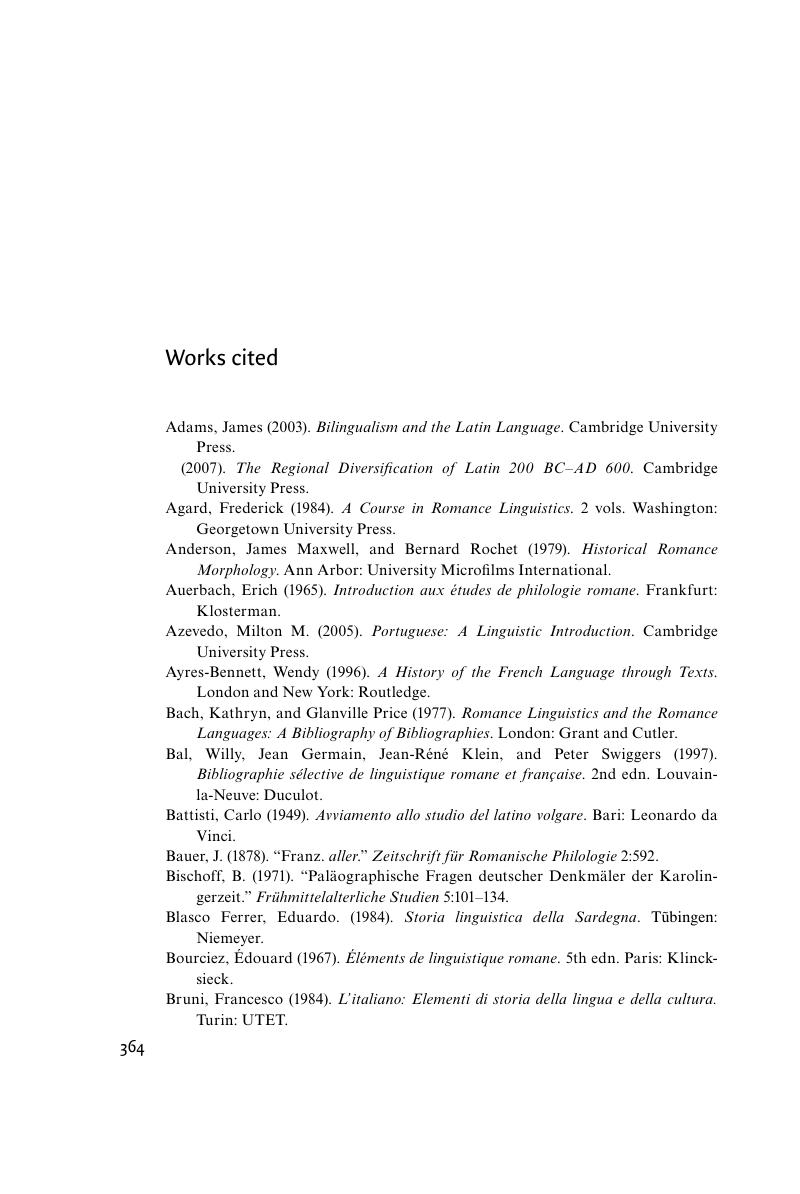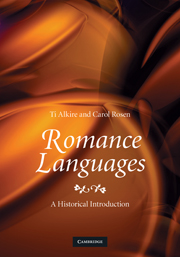Book contents
- Frontmatter
- Contents
- Acknowledgements
- Introduction
- 1 The evolution of stressed vowels
- 2 Early changes in syllable structure and consonants
- 3 Consonant weakening and strengthening
- 4 New palatal consonants
- 5 More about vowels: raising, yod effects, and nasalization
- 6 Verb morphology: the present indicative
- 7 Verb morphology: systemic reorganization
- 8 Noun and adjective morphology
- 9 History and structure of Portuguese: an overview
- 10 History and structure of Romanian: an overview
- 11 Formation of the Romance lexicon
- 12 Emergence of the Romance vernaculars
- Notes
- Glossary of linguistic terms
- Suggestions for further reading
- Works cited
- Index
- References
Works cited
Published online by Cambridge University Press: 05 June 2012
- Frontmatter
- Contents
- Acknowledgements
- Introduction
- 1 The evolution of stressed vowels
- 2 Early changes in syllable structure and consonants
- 3 Consonant weakening and strengthening
- 4 New palatal consonants
- 5 More about vowels: raising, yod effects, and nasalization
- 6 Verb morphology: the present indicative
- 7 Verb morphology: systemic reorganization
- 8 Noun and adjective morphology
- 9 History and structure of Portuguese: an overview
- 10 History and structure of Romanian: an overview
- 11 Formation of the Romance lexicon
- 12 Emergence of the Romance vernaculars
- Notes
- Glossary of linguistic terms
- Suggestions for further reading
- Works cited
- Index
- References
Summary

Information
- Type
- Chapter
- Information
- Romance LanguagesA Historical Introduction, pp. 364 - 371Publisher: Cambridge University PressPrint publication year: 2010
